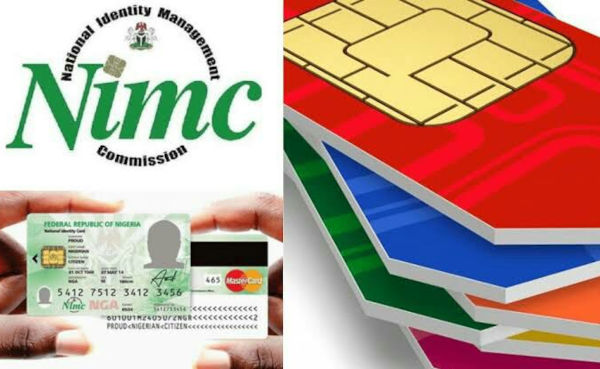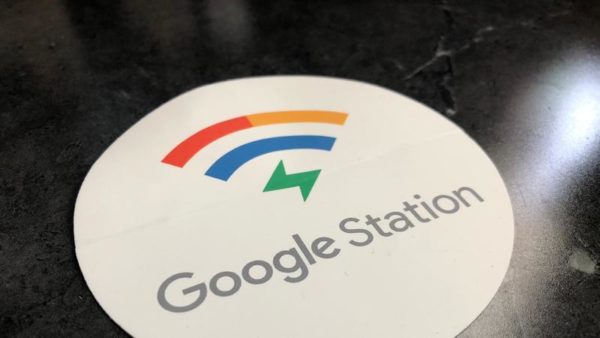Few weeks ago, Apple brought the eSIM into the limelight by introducing
it to its latest product – Apple Watch Series 3 with Cellular and this was
followed up by Google who took to the handset level – the Google Pixel 2 and
Pixel 2 XL.
it to its latest product – Apple Watch Series 3 with Cellular and this was
followed up by Google who took to the handset level – the Google Pixel 2 and
Pixel 2 XL.
(adsbygoogle = window.adsbygoogle || []).push({});
The eSIM offers a better and more secure customer
experience, improved designed devices, unlocks new market opportunities for telecom
operators and enables complete new categories of connected devices. Now going
in details.
experience, improved designed devices, unlocks new market opportunities for telecom
operators and enables complete new categories of connected devices. Now going
in details.
Moving back the hand
of time a bit
of time a bit
SIM (Subscriber Identity Module) cards keeps
network-specific data used to authenticate and identify subscribers on a
cellular network and for the past 27 years have involved a physical card holding
the chip which need to be slot in into the phone.
network-specific data used to authenticate and identify subscribers on a
cellular network and for the past 27 years have involved a physical card holding
the chip which need to be slot in into the phone.
Do you know that in 1991, the SIM card that
you inserted into your phone was the size of a credit card! In the intervening
years the size of the humble SIM card has dramatically reduced.
you inserted into your phone was the size of a credit card! In the intervening
years the size of the humble SIM card has dramatically reduced.
 |
| Evolution of SIM |
As manufacturers continuously strive to make smaller,
slimmer and lighter devices with more features, space is at an absolute
premium. Even the humble headphone jack is starting to disappear to save
precious millimeters, though the cynics among us may say that is to up-sell
wireless headphones.
slimmer and lighter devices with more features, space is at an absolute
premium. Even the humble headphone jack is starting to disappear to save
precious millimeters, though the cynics among us may say that is to up-sell
wireless headphones.
Surely the Nano-SIM, which at 12.30 mm in length and 8.80 mm
wide is small enough? Yet, as an industrial designer, you have to remember that
it’s not only the size of the SIM card itself but also the space taken up by
the associated internal hardware and circuitry that needs to be accommodated.
For many years, manufactures have had to design and accommodate the physical
SIM card via SIM card trays or other internal slots. In the quest for more
durable and waterproof phones, the more ingress points that can be removed the
better.
wide is small enough? Yet, as an industrial designer, you have to remember that
it’s not only the size of the SIM card itself but also the space taken up by
the associated internal hardware and circuitry that needs to be accommodated.
For many years, manufactures have had to design and accommodate the physical
SIM card via SIM card trays or other internal slots. In the quest for more
durable and waterproof phones, the more ingress points that can be removed the
better.
(adsbygoogle = window.adsbygoogle || []).push({});
More importantly, if you want to change operator either
after your contract has ended or you’re traveling on holiday, you have to go
and seek out a new SIM. In certain parts of the world, that’s easier said than
done.
after your contract has ended or you’re traveling on holiday, you have to go
and seek out a new SIM. In certain parts of the world, that’s easier said than
done.
It’s all changing though. In the last few years Apple
introduced the Apple SIM for use in iPad and as we led with, Google and Apple
has included an eSIM as part of its new product launches.
introduced the Apple SIM for use in iPad and as we led with, Google and Apple
has included an eSIM as part of its new product launches.
What is the eSIM?
The eSIM/Embedded SIM, or as it’s more formally known,
embedded Universal Integrated Circuit Card (eUICC), is smaller again at 5 mm in
length and 5 mm in width and is soldered onto a device’s motherboard at the
point of manufacturing while having the same functionality as a removable SIM.
It has M2M (Machine to Machine) and Remote Provisioning capabilities. Now a
GSMA standard, it wont be long before we see the eSIM become standard in other
top tier handsets from Apple and Samsung, quickly followed by the others.
embedded Universal Integrated Circuit Card (eUICC), is smaller again at 5 mm in
length and 5 mm in width and is soldered onto a device’s motherboard at the
point of manufacturing while having the same functionality as a removable SIM.
It has M2M (Machine to Machine) and Remote Provisioning capabilities. Now a
GSMA standard, it wont be long before we see the eSIM become standard in other
top tier handsets from Apple and Samsung, quickly followed by the others.
Remote Provisioning capabilities within the eSIM standard
provide us with an enhanced customer experience when activating and managing
our phones. Through our phones settings, we can select our operator and what
plan we want and that’s it.
provide us with an enhanced customer experience when activating and managing
our phones. Through our phones settings, we can select our operator and what
plan we want and that’s it.
At this years Mobile World Congress, Thomas Henze, Program
Director eSIM, Product Innovation, Deutsche Telekom demonstrated activating his
phone via scanning a code that in his demonstration was part of a physical
letter from an operator. In another demo, a scenario was played out where via a
Universal Activation Code, again used by scanning, we could activate as many
phones as we wanted.
Director eSIM, Product Innovation, Deutsche Telekom demonstrated activating his
phone via scanning a code that in his demonstration was part of a physical
letter from an operator. In another demo, a scenario was played out where via a
Universal Activation Code, again used by scanning, we could activate as many
phones as we wanted.
Taken to its logical conclusion, in the scenario that I
described previously when traveling, your phone will know it has changed
location and offer up a number of local operators and plans. While sounding
great in theory, we are yet to see if operators would like that.
described previously when traveling, your phone will know it has changed
location and offer up a number of local operators and plans. While sounding
great in theory, we are yet to see if operators would like that.
An additional consumer benefit that we’ve heard discussed is
that the eSIM should ensure future devices are cheaper to manufacture. Passing
the cost saving to consumers, of course is a whole different story and it may
not happen at all.
that the eSIM should ensure future devices are cheaper to manufacture. Passing
the cost saving to consumers, of course is a whole different story and it may
not happen at all.
(adsbygoogle = window.adsbygoogle || []).push({});
The Internet of
Things
Things
 |
The Internet of Things devices can all benefit from the eSIM
Image courtesy: GSMArena |
It’s been estimated that within the next few years the
Internet of Things devices will become the largest connect category, overtaking
mobile phones.
Internet of Things devices will become the largest connect category, overtaking
mobile phones.
The eSIM not only helps these connected devices work but
also enables new categories of devices with less compromise. What if Apple or
Samsung had to fit a physical SIM into the Apple Watch Series 3 with Cellular
and the Samsung Gear S3 frontier LTE? They would have been bigger? And with
even poorer batter life?
also enables new categories of devices with less compromise. What if Apple or
Samsung had to fit a physical SIM into the Apple Watch Series 3 with Cellular
and the Samsung Gear S3 frontier LTE? They would have been bigger? And with
even poorer batter life?
Wearables are only one category that benefits from an eSIM.
Automotive makers, with the inclusion of an eSIM allows us to quickly connect
our cars to cellular.
Automotive makers, with the inclusion of an eSIM allows us to quickly connect
our cars to cellular.
Laptops will benefit from the inclusion of the eSIM while
providing brands and re-sellers the opportunity to up-sell/cross-sell through
the use of flexible data bundles.
providing brands and re-sellers the opportunity to up-sell/cross-sell through
the use of flexible data bundles.
The future
The eSIM is the future but it will not happen overnight,
look down at your phone now and it’s still got a physical SIM, and will still
need one when you pass it onto your kids, other family members or sell it. In
the Google Pixel 2 and Google Pixel 2 XL the eSIM is currently only used by
Google Project Fi and thus it has a physical Nano-SIM card tray for all the
other operators.
look down at your phone now and it’s still got a physical SIM, and will still
need one when you pass it onto your kids, other family members or sell it. In
the Google Pixel 2 and Google Pixel 2 XL the eSIM is currently only used by
Google Project Fi and thus it has a physical Nano-SIM card tray for all the
other operators.
What is certain though, given the time it will take
manufacturers to include eSIM’s as standard, operator adoption and the
lifecycle of current devices, it won’t take another 27 years before we’ll see
the physical SIM card consigned to history once and for all.
manufacturers to include eSIM’s as standard, operator adoption and the
lifecycle of current devices, it won’t take another 27 years before we’ll see
the physical SIM card consigned to history once and for all.


































